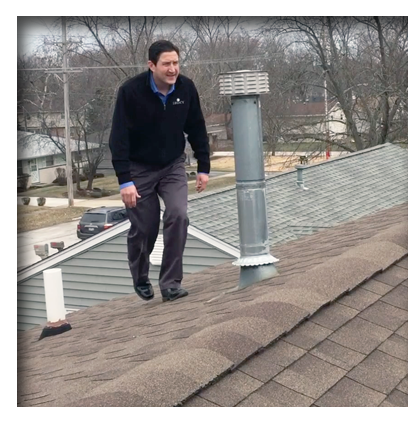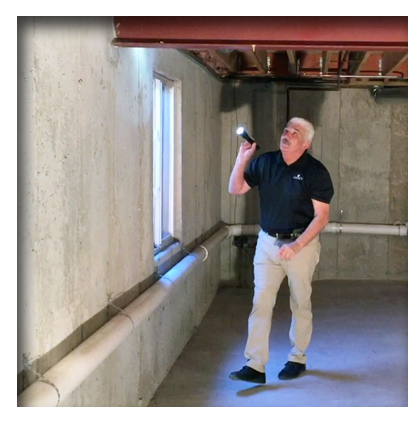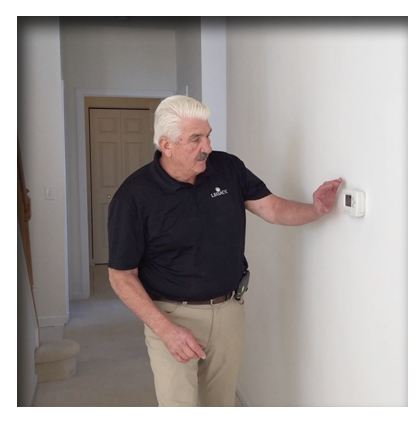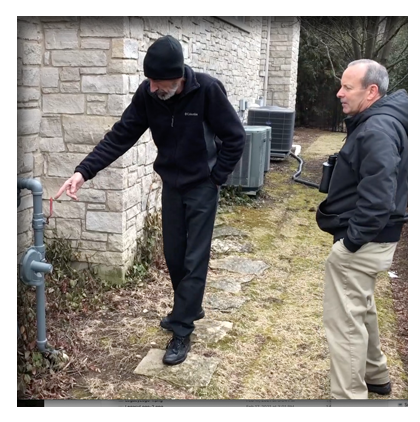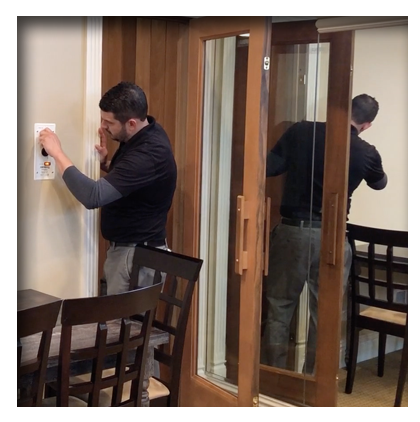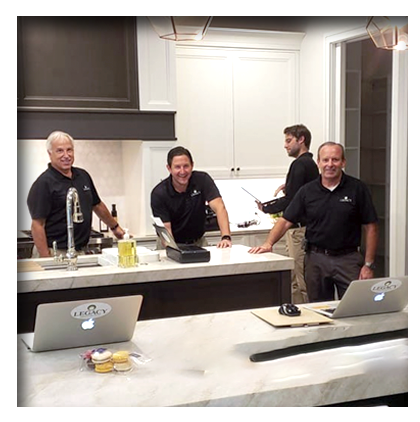Whether you’re buying a home, selling it, or just maintaining it, you must be thinking about the potential dangers lurking within it.
So, take a moment and list down all the issues that you think could be there.
Did your list include radon as well? If it did, you’re on the right track, but if it didn’t, it’s time to add it to the list. This is especially important if you own a property in Illinois – or are thinking of buying one. The reason is that approximately one in two homes in Illinois, or 45%, have radon levels at or above the EPA’s action level of 4 pCi/L. In fact, the Illinois Emergency Management Agency (IEMA) has classified many counties in Chicagoland as Zone 1 areas. This means they have a high potential for radon levels above the recommended safe limit.
Now, when such stats clearly do not work in your Illinois home’s favor, asking yourself whether you need a radon test or not comes with only one answer. Yes, you do need a radon test.
In this blog, we will cover everything you need to know about radon testing. Without further ado, let’s start.
What is Radon Testing?
Radon testing is a thorough process of measuring radon gas in your home to determine whether they pose a health risk. Radon is a colorless, tasteless, and odorless gas that naturally forms from the decay of uranium in water, rocks, and soil. So, if you ever wonder about where does it come from, then the answer is simple: through the cracks in the foundation, floors, and walls.
Considering this discreet nature of the gas, the only way to know if your property has elevated radon levels is by getting the test done.
Signs that You Need to Test for Radon
Since radon is invisible, and cannot be seen or smelled, there are different factors that might indicate “Hey, it’s time to conduct a radon test for your home.” Let’s have a look at some of such factors below:
You Live in a High-Risk Area
Radon doesn’t thrive everywhere. This is why, we definitely can’t say that every property needs a radon test whatsoever. But, if your home is located in a high-radon area then it is surely prone to elevated radon levels.
Illinois, particularly Chicagoland, is one of the areas classified in this list by the EPA. In fact, as per the stats above, there is a fair chance that your Illinois home also has a high radon level. It’s better to get it tested rather than worrying later.
Your House Has a Basement or Crawl Space
Does your home have a basement or crawl space? If it does, it is pretty much more at risk for radon as it enters a house through the soil beneath it. So, if your home has one of such features, you should not miss out on radon testing.
Also, the cold winters in Illinois make you seal your home tightly, trapping radon indoors and making testing even more important.
You Recently Moved into Your New Home
If you’ve just made the purchase and the house wasn’t tested for radon before, then the first thing you need to do is test for radon. Remember, radon levels can greatly vary from one house to another, regardless of whether they’re in the same neighborhood. So, don’t think that if your neighbors didn’t have high radon levels in their homes, you won’t either. It’s always better to be sure, and the best way for that is getting a radon test.
You’ve Done Major Renovations
Did you recently renovate your house? If yes, then don’t miss out on radon tests.
Remodeling projects, especially the ones that affect the foundation or ventilation, can alter the way radon makes its way to your home. For instance, adding a new addition, installing energy-efficient windows, or sealing cracks in the foundation can all impact indoor radon levels.
How to Test for Radon in Your Home?
Testing for radon is a simple and the only process to know if your home has high radon levels. Here’s how you can test for radon in your home, whether in Illinois or anywhere in the U.S.
Choose Between DIY or Professional Testing
The first step to test for radon is choosing between using a DIY radon test kit or hiring a professional radon testing service.
You can find DIY test kits easily at nearby hardware stores, online, and through state radon programs. If you’re looking for an easy to use and cost-effective option, these should be your go-to option. Radon test kits come in two types: short-term and long-term. The short-term kits measure radon levels for 2 to 90 days and will give a quick snapshot of radon exposure in your home. On the other hand, long-term kits measure levels for over 90 days, providing a more accurate picture of year-round radon exposure.
But if you want more reliable and detailed results, we recommend hiring a certified radon professional. These use specialized equipment to provide you with precise readings and can also offer tailored recommendations for radon mitigation if needed.
Select the Right Location for the Test
Let’s say you chose test kits. If you want accurate results, you need to place the kit in the right location.
It will be best if you conduct radon testing in the lowest level of your home, such as the basement or the ground floor. Why? Because that’s where radon enters from.
For the best results, place the test kit in a room where your family spends a lot of time, but avoid areas with high humidity, such as kitchens or bathrooms. Also, ensure that the device is at least 20 inches above the floor and away from the following:
- Exterior walls
- Windows
- Drafts
This is because these can interfere with the test’s accuracy.
Follow Test Kit Instructions
To get reliable results, you need to follow the instructions that come with the kit. For short-term tests, you’ll typically need to leave the device in place for 2 to 90 days, depending on the specific kit’s guidelines. For long-term tests, it needs to be there for over 90 days.
Avoid opening windows, using fans, or making significant changes to your home’s ventilation during the testing period. These could affect the radon levels and skew the results.
Send the Test to a Lab
Once you’ve completed the testing period, you should send the kit to a certified lab for analysis. Most test kits come with prepaid mailing instructions, so it’s easy to package up and send off your sample.
You might get the results within a couple of weeks. Once you get the results, you will know whether your home’s radon levels are within safe limits or exceeded the EPA’s action level of 4.0 pCi/L. If they did, then you need to take steps to reduce radon exposure in your home, and radon mitigation is the best option for this.
Conclusion
If you want to protect your home and family from the potential dangers of radon exposure, the first step you need to take is getting a radon test.
Whether you live in Illinois, where high radon levels are particularly common, or anywhere else in the U.S., knowing your home’s radon levels is essential.
By testing for radon, you can detect any elevated levels early on and take appropriate action to mitigate the risks. Remember, the only way to ensure a safe living environment is by staying informed and proactive about radon testing and mitigation.
So, if you haven’t tested your home for radon yet, now is the time to do so—your health and safety depend on it.
Protect your home from hidden radon dangers with our expert testing services. Our certified professionals deliver accurate, reliable results, ensuring your family’s safety. Don’t leave radon testing to chance—trust Legacy Inspection Group for peace of mind. Schedule your radon test today!
Contact us for a quote and to discuss your Home Inspection needs today at 847-217-5958. We service the Chicago area for home inspections, mold testing and radon testing.



